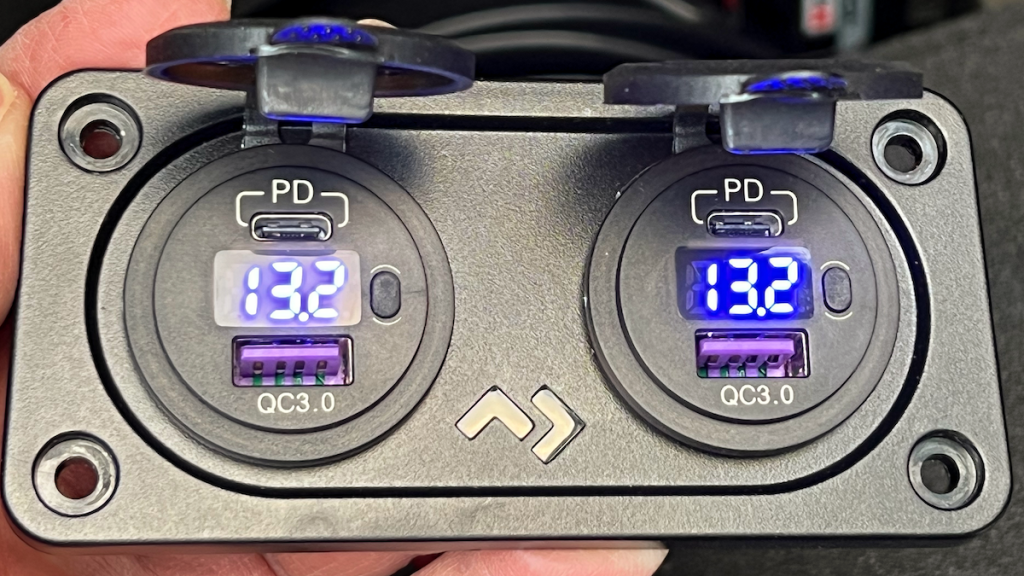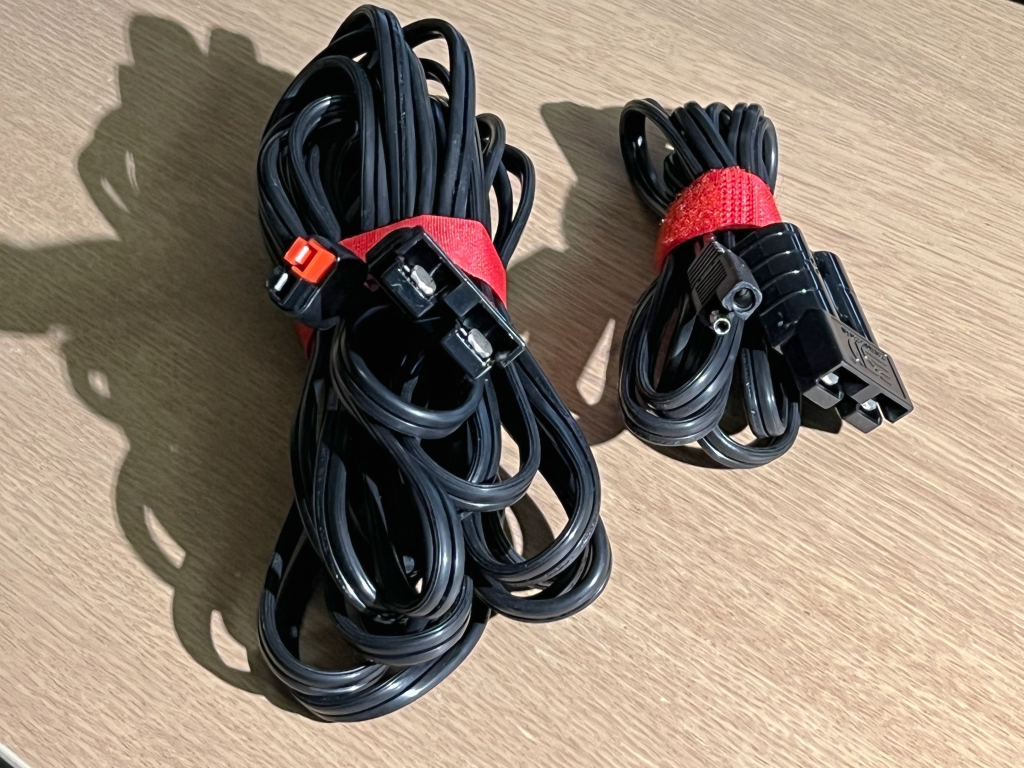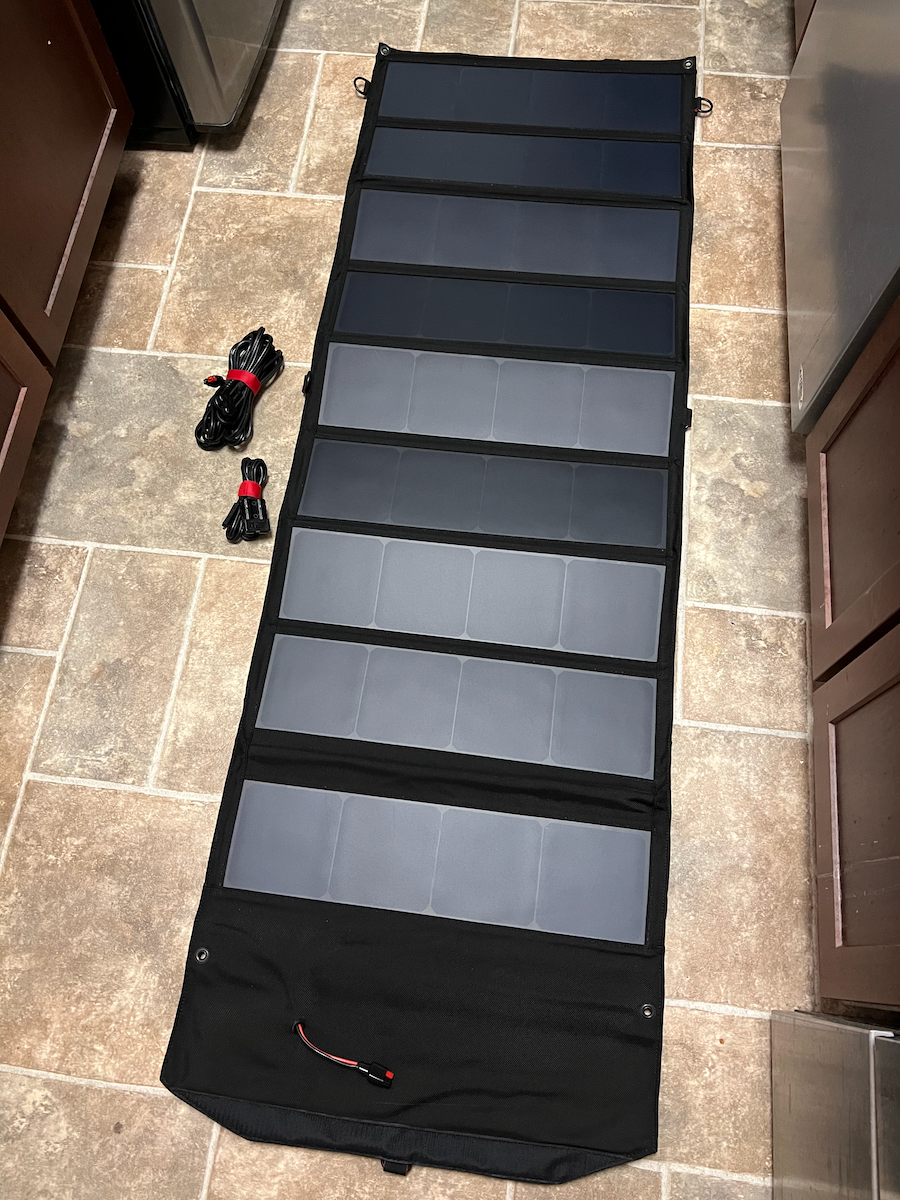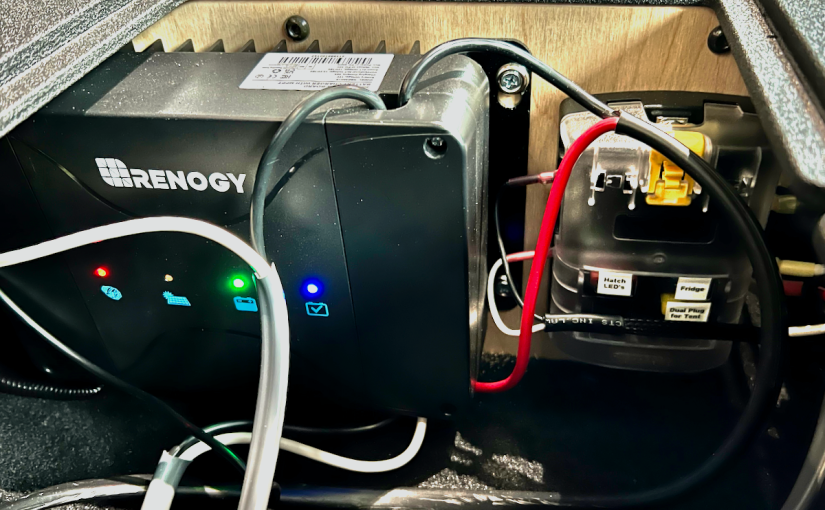With roughly three weeks left before I head out to Easter Jeep Safari 2022, I was able to decide on the off-grid power kit. Starting with the battery, I decided on a 100ah LiFePO4 (Lithium-Iron Phosphate). After researching battery companies, it came down to Battle Born, Dakota, or Renogy.
I want this to last as many years as possible, and I want the best support. I decided on Renogy. Their 100Ah battery is rated at 4,000 cycles, so the battery can be discharged that many times and still hold an 80% charge. The built in battery management system cuts off charging at 0C, and cuts off power output at -20C. Even if I don’t go out when its that cold, its good to know the battery is protected.

Renogy’s 100ah LiFePO4 smart battery isn’t cheap, even at Renogy’s Amazon store. I had to remind myself that its the heart of the off-grid kit, so I put it in my Amazon cart. An hour later someone sent me a message that the exact battery just got listed on Facebook Marketplace at half the retail price. I showed up with a battery load tester, tried to keep my composure when it measured exactly 14.6V. Half price for a battery that has 100% of it’s life left. 🙂
When I got home I looked for two major components that would be needed. A Renogy 30A Dual-Input DC-to-DC MPPT On-Board Battery Charger, and a Renogy 1000W 12V Pure Sine Wave Inverter with Power Saving Mode. I decided to source the components through the shop, since the price is pretty consistent no matter where you shopped for them.
High level goal is to have the LiFePO4 battery charged by the Jeep battery when it’s running. When the Jeep isn’t running, and a solar panel is connected, the solar panel will charge the LiFePO4 battery. My favorite part, when the LiFePO4 is at or near 100%, it’ll send power back to the Jeep battery. Pretty nifty.
I always go to Main Line Overland for these kinds of things. They’re able to get any components you need, their techs are extremely knowledgeable, experienced on some of the most extreme overland builds, and most importantly, they do some of the cleanest work. Very highly recommended by my buddies, and now I know why.
I visited them on a Friday and we spent a few minutes going over the plan. The Jeep was ready around lunch time on Wednesday. When I picked it up, I got a very thorough walkthrough, lots of answers to lots of questions, great advice, man what an experience. The icing on the cake was how beautifully they tucked the MPPT/Charger, Bluetooth monitor, and fuse box in the small cubby hole.



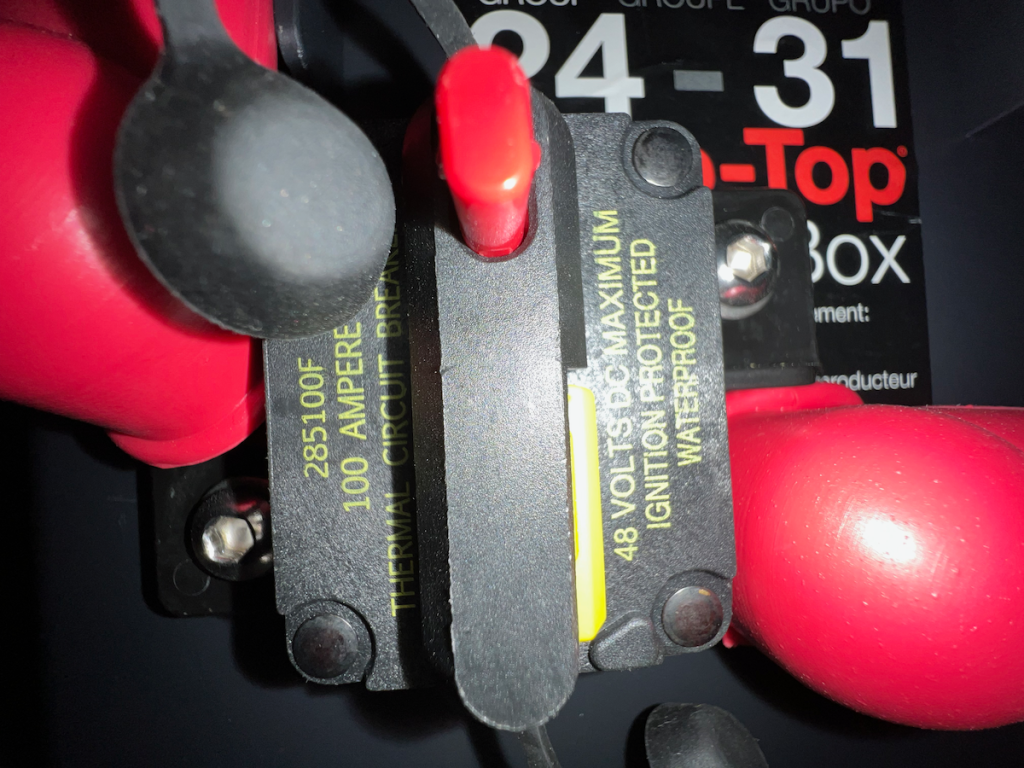
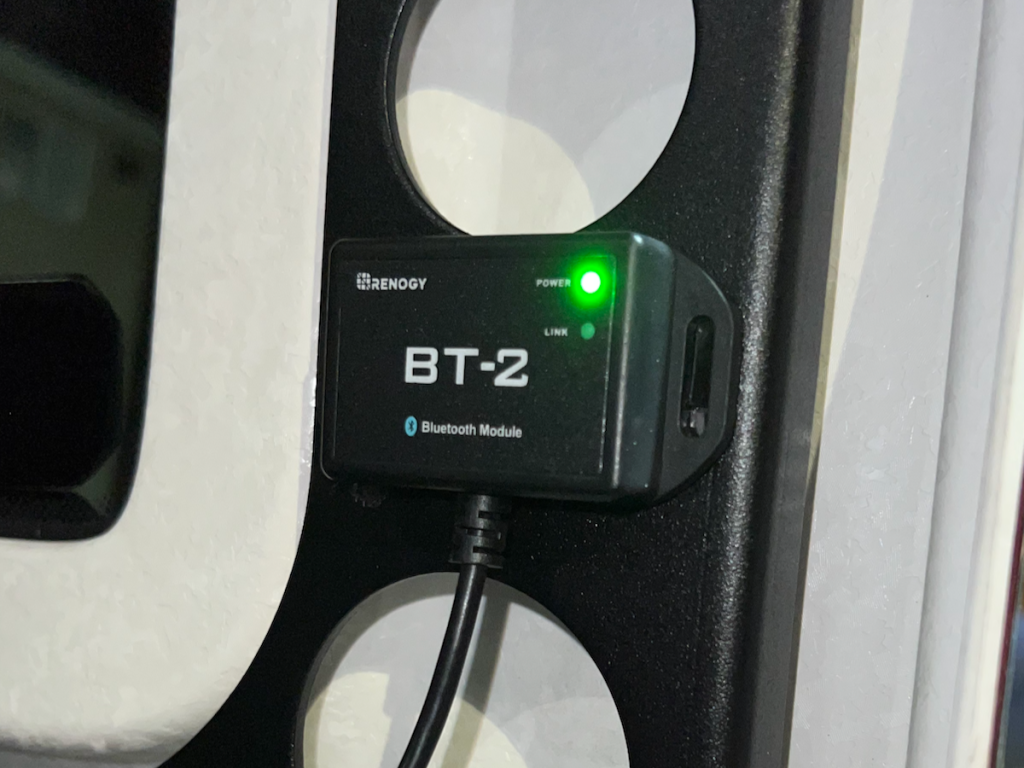
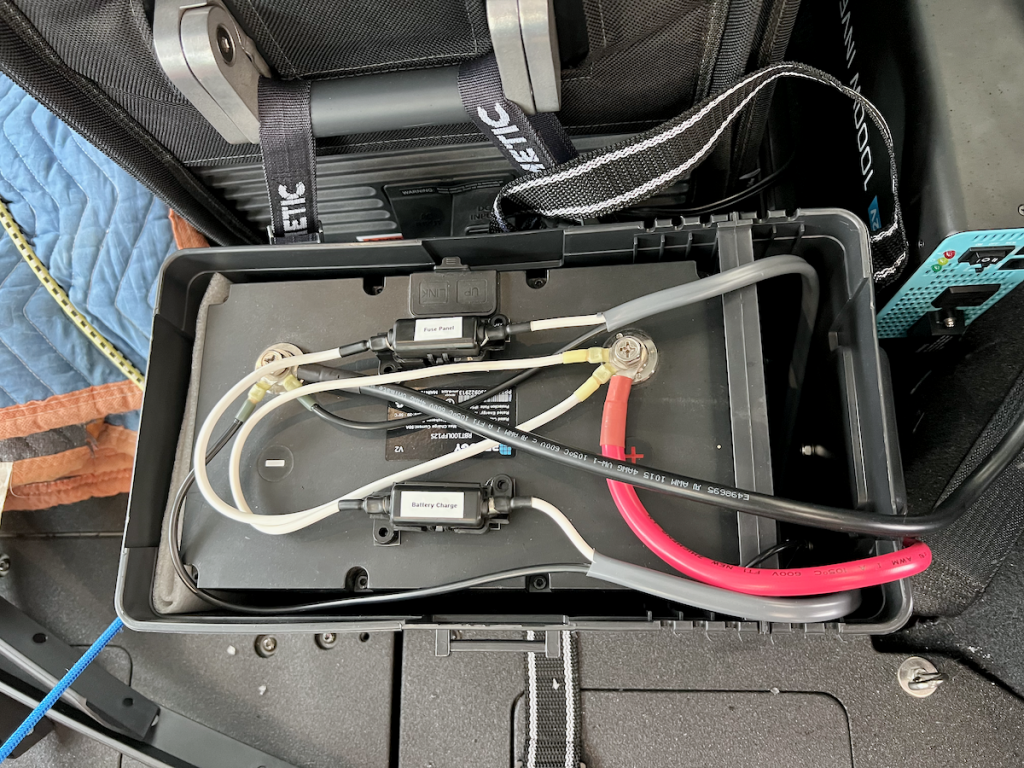
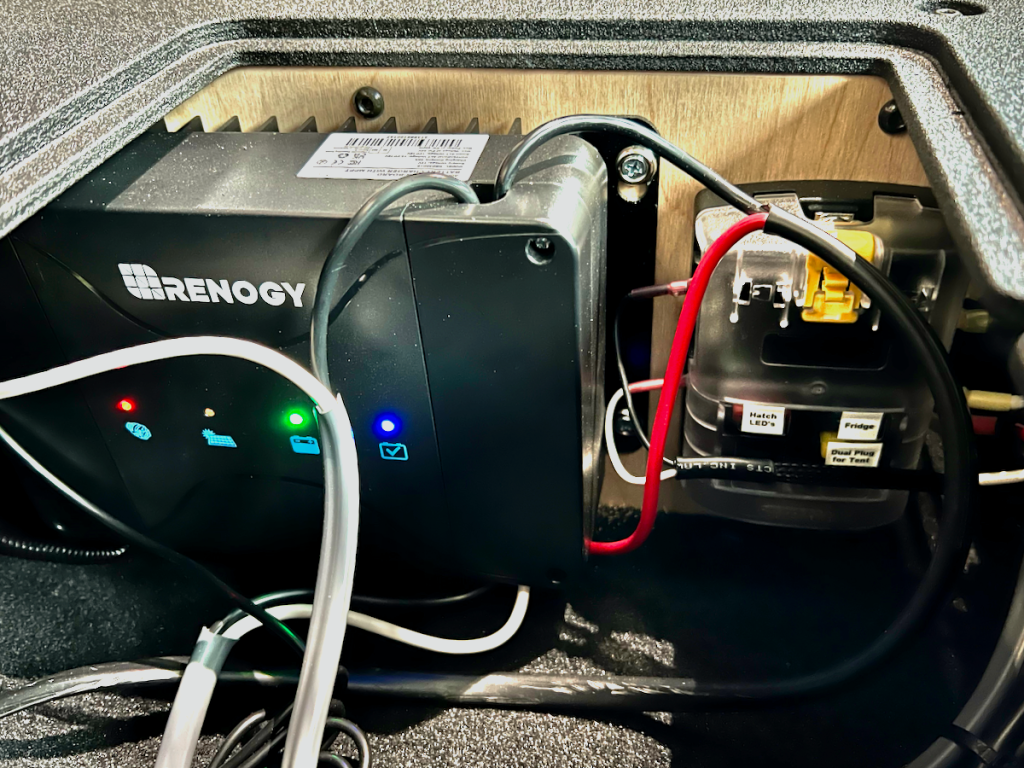
I requested a schematic, since I was going on a 5-6 thousand mile trip, and wanted to be prepared if there were any problems. I got a very detailed hand drawn schematic with color coded wiring, fuse information, etc. Coming the graphic arts, I’m impressed. I should frame it, after I take a picture of it and upload it to Apple Books for reference when I’m on the road. I’m so happy that I’ve got more power, smarter power than before.

Parts list:
- Renogy 12V 100Ah Smart Lithium Iron Phosphate Battery
- DCC30S 12V 30A Dual Input DC-DC On-Board Battery Charger with MPP
- 1000W 12V Pure Sine Wave Inverter with Power Saving Mode
- DOMETIC HARDWIRE KIT FOR DC – 2 x DC Ports – 2pin 12V and Reg 12V Socket
- BT-2 bluetooth module
- Redarc FK60 Fuse Kit
- Blue Sea Systems 6 Circuit ST Blade ATO/ATC Fuse Block
- Blue Sea Systems 7182 Series 285 Circuit Breaker – Surface Mount 40A
- NOCO HM318BKS Group 24-31 Snap-Top Battery Box
For my solar panel, I decided to go with a folding, waterproof, and very duarable Bugout 130 Solar Charger. It’s 22×68″ open, and comes with a 20′ Anderson SB50 cable, and a Anderson SB5 to SAE adapter cable that I won’t be using. The solar panel will be deployed on those days that I’m not moving around. Since the 100ah LiFePO4 battery is charged by the vehicle when it is running.
Its a good thing I had the shop provide an Anderson SB50 by the rear right door, so I have a place to plug in the solar panel. Luckily right near it, in another cubby hole, is a Dometic hard wire kit that I’ll be running into the iKamper tent, so I can power my devices (iPhone, iPad, MacBook Pro, etc.).


